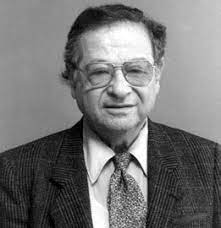Definition
Transformational leadership is a leadership style that focuses on what a leader accomplishes and how that inspires positive changes in their followers.
These leaders encourage, inspire and motivate their followers to be innovative and creative to help their organization’s progress. Essentially, a leader who personifies this model will lead by example by trusting their trained followers to be accountable about their decisions within their roles without micromanaging. Followers who are often managed under this leadership style will become transformational leaders themselves through mentorship and training.
Model & the 4 Dimensions
Originally the model was proposed by James V. Downton in 1973, but it was later expanded by James Burn in 1978. Like all models, this theory was built upon in 1985 further by researcher Bernard M. Bass to include a systematic way to measure the success of this model is applied.

The model was developed to include the 4Is, which stand for inspirational motivation, intellectual stimulation, idealized influence, and individual consideration. As shown in the fig below, the ideal transformational leader embodies all 4 traits to incite the innate change within their followers.

Ways in which these traits can be exuded from leaders are listed as follows:
- Idealized Influence: The leader should be a role model for his/her followers. They should be admiringly, respectfully and honourable such that the followers wish to emulate these characteristics. A good transformational leader always puts his follower’s need before his own and is ready to shoulder the risks with his followers. The leader is always accountable for his/her actions and demonstrates high standards of ethics and moral conduct. But he/she never uses his influence for personal gain and wields it carefully.
- Inspirational motivation: The leader behaves to motivate and inspire his followers’ with meaningful yet challenging work. The leader believes when their team is high-spirited, enthusiastic and optimistic, they will share similar achievement goals with a shared sense of convictions and motivation.
- Intellectual stimulation: The leader should encourage creativity and innovation among his/her followers, by questioning assumptions, reframing problems, and taking a jab at old situations in a novel way. Suggestions and new ideas are welcomed, even if they present differing views from the leader on matters.
- Individualized consideration: The leader prioritizes the individual’s need for achievement and progress through coaching and mentoring. In this way, the followers are put on the track to achieve their higher potential as leaders continue to provide new learning opportunities within a supportive environment. Each follower is accepted for their character and the leader-follower relationship is personalized and fostered.
Strengths and Weaknesses of this Model
Strengths
- Fosters unity for the organization’s vision: A transformational leader gets his/her followers on the common goal bandwagon, making their work experience feel enjoyable. Therefore, the unity allows for great productivity and performance.
- Annual turnover costs for the organization are reduced: Transformational leaders seek to maintain their followers for the long term and they will do everything they can to provide the necessary environment and training.
- Changes within the organization is accepted and dealt with well: Leaders will usually convince followers of the merit of the implemented change for the betterment of the organization or the “greater good” by providing roles for their participation in the big picture. The inclusion will make the change feel acceptable and somewhat welcomed.
- Encourages an ethical and is value driven corporate culture: Transformational leaders base their principles with integrity and strong values at the core of their leadership style and encourage the same within their followers.
- High morale environment accompanied by good communication: Followers led by these kinds of leaders are aware of their roles and duties because of the excellent stream of communication maintained within the institution. Thus, the followers are provided with an environment that encourages high morale.
- Employees have a lot of ‘wriggle room‘: Employees are allowed quite a bit of personal freedom as they are valued for their experience and contribution to the organization. This is inherent in one of the 4 Is, inspirational motivation listed above.
Weaknesses
- Not everyone sees the big-picture: This kind of leadership lacks the task-focusing and operation planning aspect that certain employees require more than others. Therefore, the unified vision might actually be more difficult to implement than it seems.
- Some employees experience burnout: Inspiration and motivation towards the organization’s goals and greater vision are consistently expected of the employee under this leadership. Simply turning up and doing a good job is not going to cut it, which inevitably leads to burnout for some.
- Risky and disruptive: When change is welcomed too often, the followers lose structure and it may not be the best decision for the organization as a whole at the time of implementation.
- High abuse potential: When the right and morally driven people lead at the forefront, this theory holds firm. However, it breaks down when certain transformational leaders have a twisted sense of morality and dangerous vision like Adolf Hitler or Osama Bin Laden.
- Feedback loop is essential: For any decent stream of communication, feedback is an essential component that completes the loop. Therefore, this requires constant meetings which are both impromptu and planned for the feedback to be registered and processed. In this aspect, all employees should be consistently present to be not left out of the loop.
- Only functional when followers agree: Transformational initiatives only prosper and thrive in environments where the follower can share the sold vision. If the goals are not shared, the model breaks down and is dysfunctional.
World’s Transformational Leaders

- Jeff Bezos, Amazon
Everyone knows Bezos led e-commerce into a new era with Amazon (one of the most popular online commerce websites globally). But most people do not know that it started off as an online bookstore. Jeff Bezos is a transformational model due to his ability to lead his company with the transition it has taken over the years to be where it is now. He leads with a vision shared by his employees with powerful communication and conviction.

- Reed Hastings, Netflix
Coming from the software industry, Hastings grew his company from a DVD operations company to a giant media house. Today, consumers can watch any tv program on the Netflix digital platform, ad-free and at a reasonable monthly subscription rate. He created a business model that brought about significant change in the television market with a vision to continuously do so.

- Steve Jobs and Tim Cook, Apple
Steve Jobs remains one of the most named leaders on the subject of transformational leadership. He used inspirational motivation, one of the 4Is, to challenge his employees to constantly think innovatively to develop products that brought the digital era to a new forefront. At the time he came up with the idea, these were novel ideas and technological advances. Therefore, it must have taken a great deal of courage to convince his followers to share his vision to bring the IT industry to what it is now, with smartphones, personal computers and more.

- Nelson Mandela, 1st South African President
All of the above examples narrate the successes of leaders in the IT industry. However, transformational leadership is not limited to such industries. Nelson Mandela is easily one of the most transformational leaders the world has seen. He struggled and fought for the democracy enjoyed by South Africa today by overcoming his experience of incarceration for 27 years. Mandela promoted change through forgiveness and unity, which embodies idealized influence. Mandela was respected for his high moral values, excellent self-management skills, and ethics as a president of South Africa with his nation’s progress in mind.
Difference between Charismatic and Transformational Leadership
Charismatic leaders, as opposed to transformational leaders, often have a heightened sense of who they are. They know the purpose and the role they need to play to actualize their personal meaning. This is not necessarily true for transformational leaders. Transformational leaders lead with their vision and passion for the organization, which comes from a collective nature.
Charismatic leaders influence with personality and charm and are often at the forefront of most of the decisions. A charismatic leader’s vision is his/her follower’s vision. Therefore, the leader can drive their followers to success through obedience and dependency. On the other hand, transformational leaders inspire change within the organization through a common vision and motivation to get things moving. As previously discussed, transformational leaders take great care in getting their follower’s input and continuous feedback to encourage participation and sustain motivation.
Charismatic leaders are, by default, transformational leaders. However, not all transformational leaders are charismatic leaders. This means charismatic leaders tend to be scarce and specialized. They usually emerge in crisis management situations required at the top-level management. However, promising transformational leaders can be nurtured through the proper work environment and training at any level of the organization.
Notable Research and Review Articles
Bass, Bernard M., and Bruce J. Avolio. Improving Organizational Effectiveness: through Transformational Leadership. Sage, 1994.
Anthony, S., & Schwartz, E. (2017). What the Best Transformational Leaders Do. Harvard Business Review, Retrieved from https://hbr.org/2017/05/what-the-best-transformational-leaders-do
Lai, Fong-Yi, et al. “Transformational Leadership and Job Performance: The Mediating Role of Work Engagement.” SAGE Open, vol. 10, no. 1, 2020, p. 215824401989908., doi:10.1177/2158244019899085
Moradi Korejan, M, and H Shahbazi. “An Analysis of the Transformational Leadership Theory.” Journal of Fundamental and Applied Sciences, vol. 8, no. 3, 2016, p. 452., doi:10.4314/jfas.v8i3s.192
Steinmann, Barbara, et al. “The Path Is the Goal: How Transformational Leaders Enhance Followers’ Job Attitudes and Proactive Behavior.” Frontiers in Psychology, vol. 9, 2018, doi:10.3389/fpsyg.2018.02338
Liu, Haixin, and Guiquan Li. “Linking Transformational Leadership and Knowledge Sharing: The Mediating Roles of Perceived Team Goal Commitment and Perceived Team Identification.” Frontiers in Psychology, vol. 9, 2018, doi:10.3389/fpsyg.2018.01331
Khan, H., Rehmat, M., Butt, T.H. et al. Impact of transformational leadership on work performance, burnout and social loafing: a mediation model. Futur Bus J 6, 40 (2020). https://doi.org/10.1186/s43093-020-00043-8
Tian, Hongyun, et al. “The Impact of Transformational Leadership on Employee Retention: Mediation and Moderation Through Organizational Citizenship Behavior and Communication.” Frontiers in Psychology, vol. 11, 2020, doi:10.3389/fpsyg.2020.00314